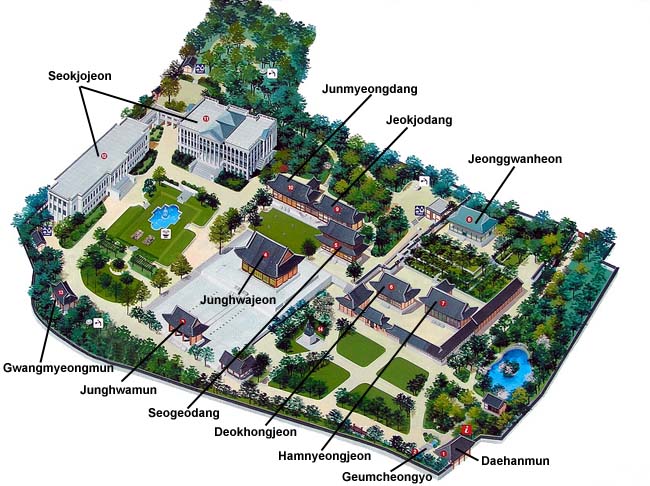
source: palace sign
Deoksugung Palace
Seoul, Korea
Deoksugung began as the palace of a 15th century Joseon prince. It became the king's official residence during the Imjin War (1592), when the other palaces had been destroyed, but after Changdeokgung was rebuilt in 1618 the Deoksugung reverted to auxiliary status. The palace was only named "Deoksugung" in 1909, when it became the residence of retired emperor Gojong; prior to that, it had gone by several other names. Gojong's residence, the Seokjojeon (see map), was the first modern palace building in Korea, giving Deoksugung an interesting mixture of modern and traditional buildings. Like other palaces in Seoul, it was heavily damaged during the Japanese occupation and later restored. For more information, see Deoksugung's official website including The Past and Present of Deoksugung.

